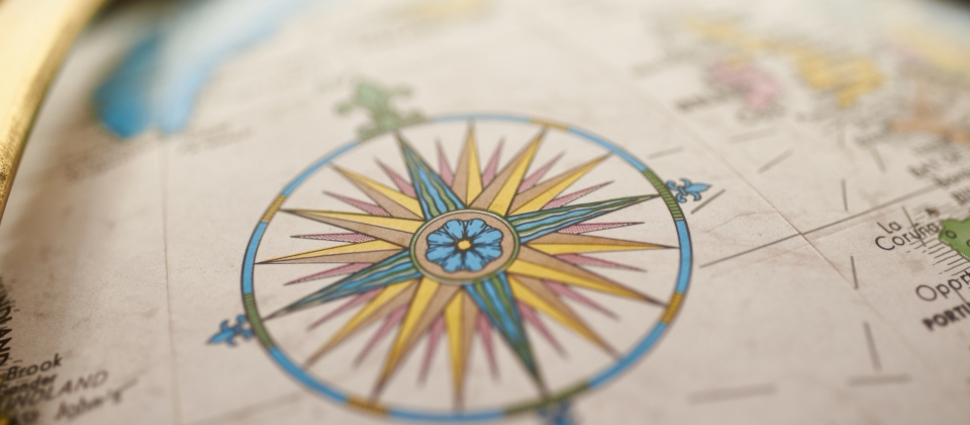Manche Masemola – An African Teenage Martyr

Manche Masemola – An African Teenage Martyr
The statue of Manche Masemola is one of the ten in the Modern Martyrs of the 20th Century collection adorning Westminster Abbey’s Great West Door. The collection, designed by the renowned sculptor Tim Crawley, was unveiled in 1998. Masemola, together with the Ugandan bishop Janani Luwum[1], represents the continent of Africa.
Manche Masemola was born around 1913 in or near Ga-Marishane, in the natural region of Sekhukhuneland (in what has become known as the Transvaal region of north-east South Africa). She was a Pedi, a member of a historical people who once constituted a powerful kingdom. By the time of her birth, however, the Pedi were confined to a rather barren land.
Very little is known about her life. In fact, she only made news after her death. The earliest written report was given by a Mrs. Moffat, the wife of the Anglican priest at the Jane Furse mission, about ten miles away from Ga-Marishane. This was corroborated (with minimal variations) by Fr. Augustine Moeka of St. Peter’s Anglican Church at Ga-Marishane, who prepared Manche for her baptism, and by Manche’s cousin Lucia, an orphan who lived with Masemola and her three siblings.
According to Lucia, when Manche was 13, the two of them heard Moeka preach and asked permission to attend his classes for people interested in learning about Christ. Manche’s parents consented, as long as the girls also attended the traditional initiation school.
The Pedi had traditionally opposed some resistance to the missionaries’ presence, partially because the missionaries represented the western powers that had segregated them, and partially because they feared the upset of their traditions (particularly when the missionaries expected them to adopt western customs).
When Manche’s parents realized that Manche and Lucia were being formally prepared for baptism, they sent both girls to a distant location to work as cooks for cattle-herders. Since the girls persisted in their faith, the parents divided them by sending Lucia back home. Then they began to beat and humiliate Manche into submission.
This attitude was not uncommon, considering the importance family and tradition held in African cultures. It was with this relevance in mind that, at the 1974 Lausanne Convention, the Nigerian theologian Byang Kato[2] exhorted missionaries to bring the gospel to whole families, not just to individuals.
Kato had experienced a similar opposition as a child. Like Manche’s parents, Kato’s father had beaten him and taken away his clothes to prevent him from going to church. And like Manche’s parents, Kato’s father was concerned about the amount of time his son was spending in church, away from the fields which were their only source of livelihood.
But Manche’s parents employed measures which were much more drastic, including forcing her to drink a portion prepared by the local traditional doctor, which was supposed to drive her away from Christianity. The difference might lie, at least partially, in the fact that Kato acquiesced to his father’s demands for a year, until the church managed to persuade his family to let him go.
Actually, Moeka had encouraged Manche and the other girls to respect the authority of their parents. As he prepared them for baptism, he recommended that they continue to wear traditional African clothes even after. He was probably referring to the girls’ desire to join a Christian organization called “the Wayfarers Club,” where girls wore kaki dresses and white headscarves. But the girls, including Manche, disapproved of his suggestion. Later, Manche reconsidered this refusal – she might have understood the advantage of appeasing her parents in matters of lesser importance. When it came to her faith, however, she never relented. “If they cut off my head, I will never leave my faith,”[3] she was reported as saying.
The more she insisted on her decision, the more her parents punished her. She was scheduled for baptism on Easter 1928, but she reportedly foresaw her death: “I shall be baptized with my own blood.”[4] Her prediction came true, as she died just one or two months before Easter. She was about 15 years old.
Most reports state that she was killed by her parents’ beatings. One version states that she had died from the potion. In any case, it seems clear that her parents (some include her community) were instrumental in her death.
Manche’s mother continued to oppose Christianity until 1969, when she finally converted and was baptized, adopting the new name Magdalene. As for Manche, she was included in the Anglican calendar of saints in 1975, and many pilgrims still visit the place of her burial.
It’s difficult to know if anyone could have prevented Manche’s death. According to scholar Mandy Goedhals, her parents’ reaction was not entirely uncommon. In fact, “the local native commissioner was aware of the physical violence inflicted on young women and issued an order that those who wished to be Christians should not be molested, but had no means of enforcing this except through the chiefs.”[5]
When asked if she was afraid to die, Manche said, “Never.”[6] She was determined to resist until the end, regardless of the consequences. She had been instructed in the Christian faith for approximately a year, and didn’t know how to read or write, but had learned enough to know what she believed and where she was going.
[3] Dominic Whitnall, “Manche Masemola, Sekhukhuniland Martyr,” 1983, quoted in Mandy Goedhals, “Colonialism, Culture, Christianity and the Struggle for Selfhood: Manche Masemola of Sekhukhuneland, c.1913-1928,” 2000, p. 101, https://journals.co.za/doi/pdf/10.10520/AJA10231757_224
[4] Mandy Goedhals, “Colonialism, Culture, Christianity,” 102.
[5] Mandy Goedhals, “Colonialism, Culture, Christianity,” 110.
[6] Mandy Goedhals, “Colonialism, Culture, Christianity,”





